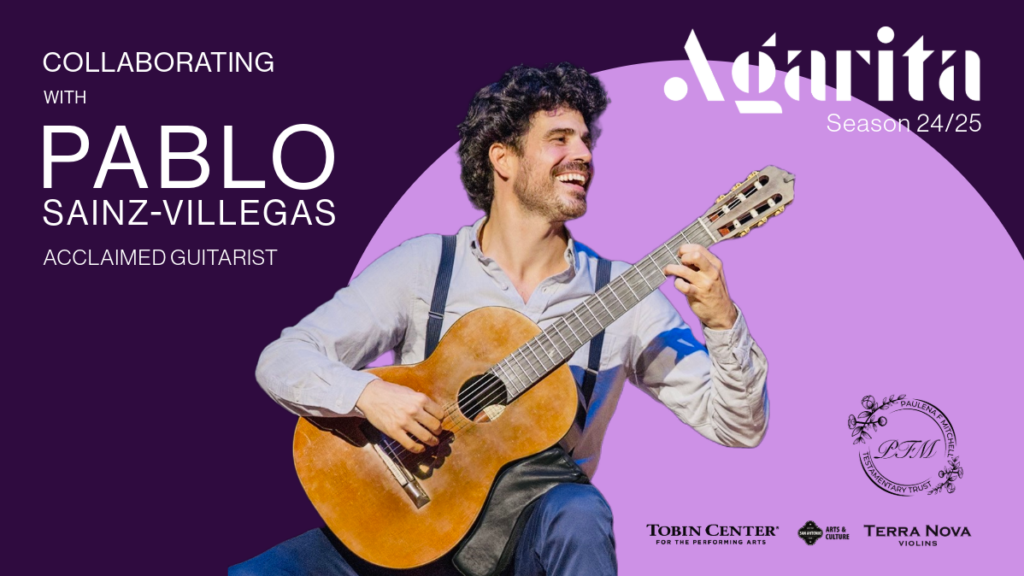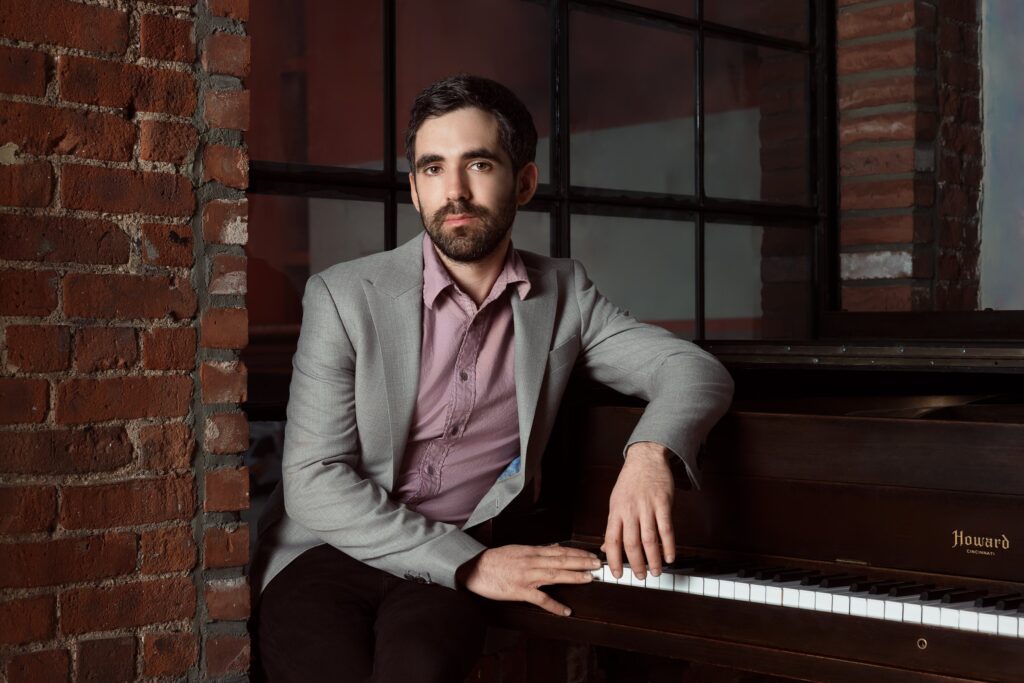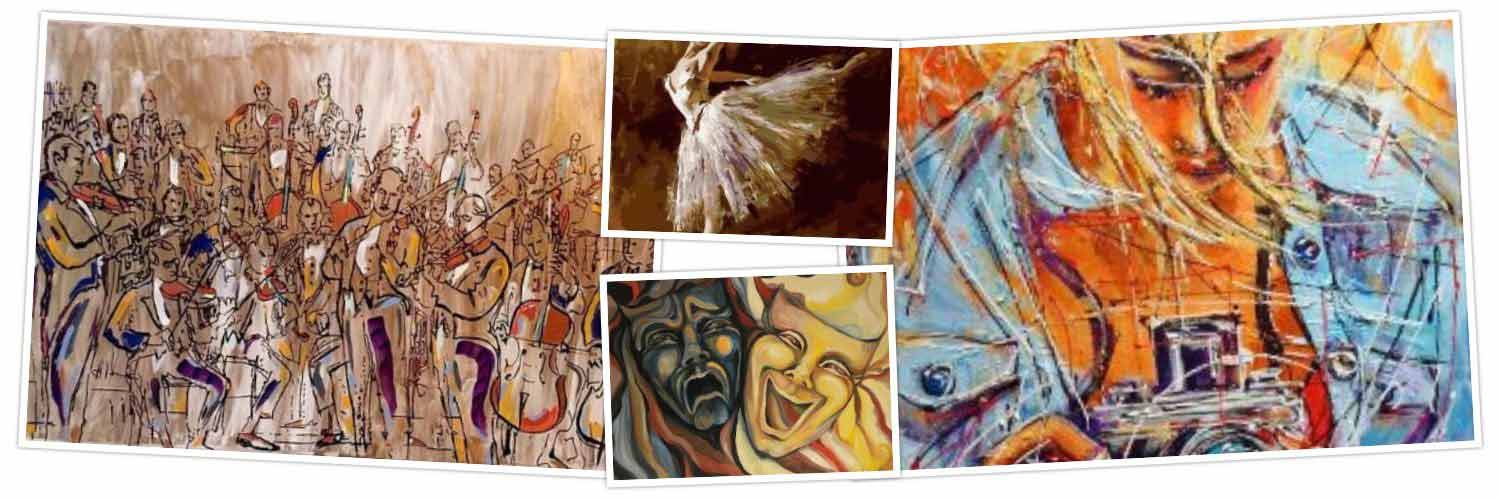An Interview with Daniel Anastasio of AGARITA
AN INTERVIEW WITH DANIEL ANASTASIO, Pianist and Artistic Director of the AGARITA CHAMBER PLAYERS
Interview by JASMINA WELLIINGHOFF, Editor
There are references in your online material that AGARITA is reinventing the concert experience. Please explain how?
Your typical classical music concert includes a few large (25+ minutes) works by canonic composers like Mozart, Beethoven, Brahms, Debussy, etc., with a shorter work of contemporary music thrown in, and an intermission to break up the 100-minute show. Play. Bow. Clap. Repeat — with maybe a few words about the composers and their lives thrown in. What Agarita is doing is offering a more engaging and accessible experience on all fronts. For starters, our programs are only 75 minutes long and without intermission, so that the program can achieve a singular narrative arc whose emotional threads are uninterrupted. The pieces themselves rarely exceed 10 minutes (and we’re not shy about only programming movements of works), so that again, the focus is on a larger musical narrative with smaller works serving a grander vision that is relevant to ourtime and community. We speak to our audience between virtually every piece, and each of the ensemble’s voices are heard. We enjoy establishing a real connection with our audience beyond just the historical context of the pieces, and offer insights into our personal relationship with both the music itself and the people we collaborate with. And speaking of collaboration, essentially all of our programs include a collaborative element, from other musicians to visual artists, dancers, poets, etc. Because of that added element, there is a new conceptual dimension and more artistic entry points for our audiences. Finally, when appropriate, we enjoy adding production elements like lighting and electronic media to enhance the experience. None of this is groundbreaking for a show or experience in the 21st century — but it’s certainly unique for a classical music concert, and we’re giving the best argument we can for our field to adopt these experiential changes in order for the music to shine and thrive.
Have you performed at the TOBIN before? Could you describe the pluses and minuses of performing in such a large space?

We were lucky enough to perform at the Tobin during the pandemic, but that was a very different experience than the show coming up on Sunday. We had distanced, limited seating at that show, and we’re hoping that the one coming up — with your help! — will be pretty packed. We’re on our way, with over 1,000 tickets reserved so far. One of the main benefits of performing chamber music in such a big space, besides getting to reach more people, is that the collective energy of the larger crowd has a more significant impact on the performer, and therefore can be an amplifier for inspiration. If you’re playing quietly and in a private manner on stage, and you hear the silence of 1,700+ people listening intently, you feel all of that collective listening and are inspired to express yourself in a spontaneous, vulnerable way, to take the musical journey deeper. If you’re in the middle of a bombastic, no-holds-barred passage, the stakes feel higher with so many eyes on you and your attention rises to an electric level as you execute the music on your instrument. One of the main disadvantages of playing in a larger space is that chamber music was initially intended as a more private experience, in homes or in smaller-scale venues. This might be preferred simply because of the small number of players and therefore smaller sound (rather than an orchestra), and so that the musical dialogues, colors and timbres could be discerned. Why wouldn’t you want to be sitting right in front of the musicians, allowing the sound to envelop you, rather than hundreds of feet back? That said, there is something uniquely magical about witnessing a musical experience amongst hundreds of others, with all eyes and ears focused on a musical message.

How did you meet Pablo. Was it during your time in Spain? Can you describe his style of performance and how he complements the quartet?
Our cellist Ignacio Gallego met Pablo at the Manhattan School of Music back when they were students; as they are both from Spain and extremely sweet, open-hearted people, I imagine the bond happened rather quickly. A few years into Agarita’s existence, we began thinking of great musicians to bring here to collaborate with us, and Pablo’s name came up. He was already a known entity in our field, and growing in popularity for his authentic, vulnerable relationship with the music and for the way he engaged with audiences. His dedication to his craft and to spreading the music’s message and power to the next generation through community engagement spoke to us and our own mission. After inviting him here to San Antonio, it was immediately clear that our missions aligned. Providing this music to all of our community free of charge, the way we engaged with our audiences during and after concerts, and the extent of our community engagement beyond our big community concerts, impressed him enough to invite us to his festival in La Rioja. We had an exceptional time, and seemed to fit right in with his gracious home crowd.
What will you be performing for this upcoming concert with Pablo. What’s “bold” about this concert?
Our concert on Sunday is a program with a lot of heat. Most familiar will be some breathtaking tangos by Astor Piazzolla, featuring a variety of different combinations of instruments, but I’ve also programmed a new, folkloric work by Clarice Assad called Canções da America, a riveting, impressionistic quintet by Javier Farias called Andean Suite, and the concert begins with the opening movement of Andrea Casarrubios’s brilliant Piano Quintet. Another Argentinian, Alberto Ginastera, makes an appearance with my solo piano work Danzas Argentinas, and Pablo’s solo Gran Jota by Francisco Tárrega will surely be the blockbuster of the evening. Overall, aside from highlighting Pablo’s innate strengths as a virtuoso Spanish guitarist, the program aims to be well-balanced between the profoundly reflective and exhilaratingly passionate. There won’t be much to dislike about this one. Oh, and I’ll need to brush up on my castanets for the final piece, a famous Fandango…
All your concerts are free. How do you generate an income?
Yes– from our inception, we have believed in putting on concerts free of charge for the whole community to experience. Among many other reasons, we have wanted to turn the traditional classical music model on its head, so that our audiences wouldn’t only be made up of those in a certain economic bracket, or those with privilege. Our goal has always been a diversified audience that truly represents our community. Sounds idealistic, doesn’t it? Well, keeping these concerts free relies on the generosity of those who believe in our mission, who believe just like us that this music should be accessible to everyone and not reserved for the middle and upper class. We are extremely grateful to be living in a city that, especially after seven strong years of free, collaborative events, has demonstrated tremendous support. As a nonprofit organization, we receive a combination of individual donations, grant funding, city funding, and corporate sponsorships. Those are our main sources of funding.
Who is your music director, so to speak?
As the Artistic Director, I invent the musical programs by working with our collaborators, and I oversee some of the production elements of our concerts as pertains to the aesthetic and flow. I take a lot of care in coming up with our musical selections, and I consider the arc of a program to be an art that is largely under-utilized by classical musicians. That said, all four of us discuss everything that pertains to Agarita, and the ideas from the entire group help to generate what ends up being the product our audiences see and hear. Our strength as a group is our lack of hierarchy. Any of us can be checked and questioned, just as we all have equal say in organizational decisions, from the administrative to the artistic.
You have an art gallery in your AGARITA LOFT. Whose art is being shown at present? And who chooses the artists?
We are proud of our recently acquired Agarita Loft, which is at 724 S Alamo St. We have already had all kinds of events there, from musical lectures to art gallery exhibitions to unique performances. In terms of visual art, we feature local artists, of which there are plenty, all unique and phenomenal! This Friday March 7 is the opening of a new exhibition there that includes works by Lucia LaVilla-Havelin, Ashely Mirelez, Abby Hinojosa, Jennifer Khoshbin, Tim Olson, Jalen Colton Sanchez, and Naomi Wanjiku Gakunga. The exhibit is titled Cultural Threads, and interlaces history, identity, and tradition through works on paper, collage, fabric, textiles, and metals. This collection showcases artists who stitch personal and collective narratives, using materials that evoke memory, resilience, and belonging. We are proud to have Jon Hinojosa curating the gallery this year.
And here’s the last question. Tell us about something funny that might have occurred during a concert.
In terms of an unusual occurrence, I don’t think anything can top what happened at our first show with Pablo at the San Antonio Botanical Garden in 2023. He and his fiancé Sara were deeply in love (she joined him on the trip to San Antonio), and after mentioning to us their eagerness to be married as quickly as possible, our violist and Executive Director Marisa Bushman casually mentioned that she is technically an officiant. We hatched a plan, and before we knew it, we had decided that right in the middle of the concert, she would marry the two of them. And so, a beautiful musical evening turned into an unforgettable one. Our relationship with Pablo and Sara will always be a kind of familial one, given that special night. ———————————————————————————————————————————————————-
